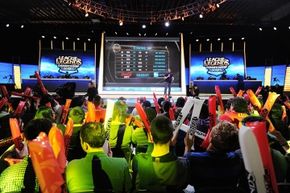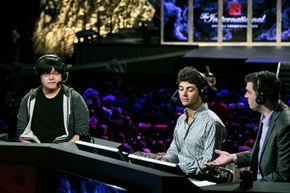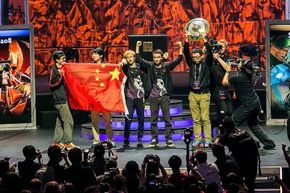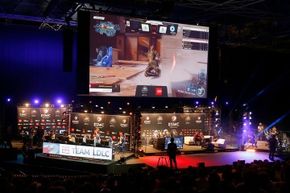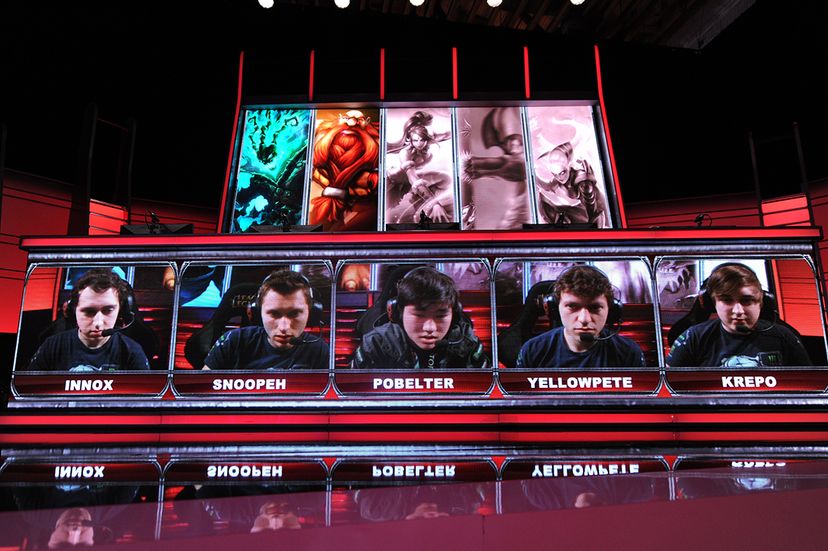
They say that if you love what you do, you'll never work a day in your life. They also say that, if a thing exists, humans will find a way to compete over it — or make money from it. So it was only a matter of time before the spiritual successors of pinball wizards and pool hall warriors found a way to take video games from the couch to the colosseum.
That's right. It is now possible to make a living playing video games. And why not? The global video games industry now posts profits that outstrip the music industry and show signs of creeping up on the film industry [sources: Kamenetz, Wingfield]. Someone was bound to clamp a vampire clip onto that money stream eventually. That's not to say that the journey hasn't seen its share of false starts and detours: Video game tourneys date back to the early 1970s, and attempts to turn them into watchable theater began as far back as the early 1980s.
Advertisement
These attempts share about as much in common with modern professional gaming, aka eSports, as NBA hoops do with basketball inventor James Naismith's peach baskets. Today, pro-gaming tournament circuits ring the globe, and prize pools — funded by tournament hosts, game companies and sales of special passes and merchandise — reach into the millions. Major events fill stadiums like San Jose's SAP Center, and online viewership can reach into six figures.
Solid estimates on details — such as the lifestyle, money involved and the number of players making a living at eSports — remain elusive. It's a young sport and strictly a freelance operation. Winners pay for rent, rigs, and Red Bull with prize money and social media revenue, sponsorships and appearances. Wannabes often rely on parental support while they struggle to break into the top-tier leaderboards, where teams and tournaments might take notice.
But they're still part of a larger community, one that helps to account for eSports' rising success. When it comes to the level of access that fans have to pros and superstars alike, eSports is in a class by itself. Through social video services like Twitch, fans can experience the equivalent of listening to Tom Brady narrate his thoughts as he calls an audible, or follow Kobe Bryant on a fast break as he reads the defense. Pay for the right access level, and a pro might even answer your question, or drop into a pickup game that a few lucky fans can join.
To outsiders, professional gaming might still draw sneers. But to a global community that numbers into the millions, the joke is on anyone who doesn't follow these computerized contests of skill.
Advertisement
